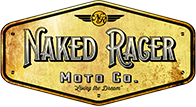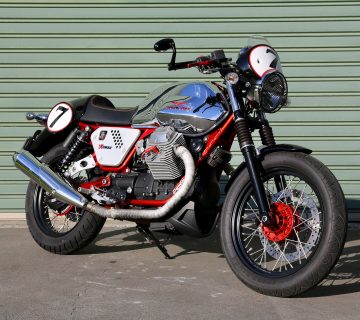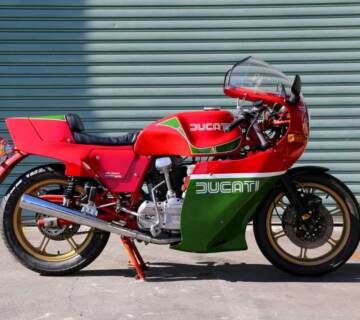Laverda Motorcycles: History, Iconic Models, and Legacy
Laverda Motorcycles stand among the true legends of classic Italian motorcycling. Founded in 1949, the brand quickly gained a reputation for durability, racing pedigree, and bold engineering. From the humble 75cc Motoleggera to the iconic 750 SFC and the thundering Jota triple, every model carried a spirit of endurance and performance. In the golden era of the 1970s, Laverda became synonymous with high-performance twins and triples that rivaled the best from Europe and Japan. Today, collectors, riders, and enthusiasts continue to celebrate Laverda’s unique blend of engineering brilliance, Italian style, and racing legacy.
Origins and Foundation (1949–1960)

In 1949, Francesco Laverda built his first 75cc overhead-valve motorcycle, originally crafted for his own use. Local enthusiasm quickly turned into demand, leading to small-scale production. By 1951, nearly 500 units had been produced, a remarkable milestone for a brand-new Italian marque.
Laverda’s reputation for endurance came early. In the 1953 Milan–Taranto road race, Laverda machines achieved an astonishing sweep, taking the first 14 places in their class. This achievement cemented their status as tough, reliable motorcycles capable of excelling in grueling long-distance events.
Expanding beyond the 75cc model, the company soon released a 100cc motorcycle and experimented with 50cc and 60cc scooters. These machines widened Laverda’s appeal and showcased the company’s ambition to deliver both practical mobility and performance-oriented engineering to a growing Italian market hungry for affordable, reliable two-wheelers.
The Twin Era (1961–1977)

Laverda pivoted decisively in 1961 with a fresh 200cc OHC twin—a compact, refined engine that signaled the brand’s move from small-capacity utility to purposeful performance. The real revolution arrived in 1967 when Massimo Laverda introduced a robust 650cc OHC twin, the architecture that would soon define the marque.
By 1969, displacement grew to 750cc, giving us the enduring 750 GT and 750 GTL. These twins built Laverda’s reputation worldwide for high-speed durability, long-legged touring manners, and rugged construction that shrugged off hard miles.
In 1971, the 750 SF1 sharpened the formula: a lighter crank for livelier spin-up, larger 36 mm carburettors, and bigger valves for stronger breathing. Braking kept pace: the SF’s drum gave way to a single front disc on SF2, then twin front discs on SF3, which also added a rear disc, electronic ignition, and cast aluminum wheels for confident, modern road manners.
Topping the family, the 750 SFC (1974) was a true homologation special—roughly 500 units—featuring magnesium components, a tuned engine, and a lighter frame. More than a badge, the SFC carried real endurance-racing DNA, delivering the focused feel and fierce personality that made Laverda twins legends of the era.
The Triple Era (1973–mid-1980s)

In 1973, Laverda unveiled the DOHC 981cc “3C” triple, a bold step that redefined the brand’s identity. Stout crankcases, strong bottom-end hardware, and long-legged gearing made these bikes fast, stable, and unmistakably mechanical—true grand-touring superbikes of their time.
The platform’s cult icon arrived in 1976 when UK importer Slater Bros developed the Jota—effectively a factory-approved, tuned 3C with hotter cams and freer breathing. With period-tested ~143 mph performance and aggressive stance, the Jota became one of the defining superbikes of the 1970s and a cornerstone of Laverda Motorcycles legend.
Laverda broadened the triple family to suit sport-touring and long-distance riders alike. The RGS1000 (1983) added a half fairing and a more refined, long-range character, while the SFC1000 (1984) pushed the sporting edge with chassis and braking upgrades. For mile-eaters, the over-bored 1200 Mirage (1978–1983) delivered relaxed touring torque without losing the brand’s trademark solidity and road presence.
Ever adventurous, Laverda even built a V-six endurance racer in 1978—a jaw-dropping engineering statement that proved too fragile in competition, retiring early at the Bol d’Or. While short-lived, it showcased the marque’s willingness to chase engineering moonshots.
Decline and Revival Attempts (1987–2000)
Despite the engineering charisma of its twins and triples, Laverda struggled with high production costs, limited scale, and increasingly fierce Japanese competition. By 1987, the company entered receivership—an inflection point that ended continuous production under the original Breganze era.
A restructuring in 1989 birthed Nuova Moto Laverda, relocating assembly to Zanè. The new team focused on modernized middleweights, developing a contemporary 650 cc/668 cc twin platform that later stretched to 750 cc. These Zanè-era machines, including the 750S and sportier 750S Formula, carried forward the marque’s performance identity while trying to meet 1990s emissions and market demands.
Momentum proved hard to sustain. Limited volumes and capital constraints capped R&D, and dealer networks remained relatively small. In 2000, Aprilia acquired Laverda, marking the end of independent motorcycle production and closing the chapter on decades of family-driven innovation.
Present Situation (as of 2025)
Today, Laverda Motorcycles remains a dormant marque within the Piaggio Group. There is no confirmed factory program to revive production, and recent industry commentary suggests no active initiative is underway. The brand lives on through enthusiasts, restorers, and specialist suppliers who keep twins and triples healthy on modern roads.
The Laverda name continues separately in agriculture: the historic Breganze facility now builds modern combines under AGCO brands, preserving the town’s link to engineering and manufacturing. While the motorcycle line sleeps, the mechanical spirit that made Laverda famous still resonates through owner clubs, rallies, and a vibrant classic market.
- Ownership: Brand held under Piaggio; no official motorcycle relaunch announced.
- Agricultural legacy: Breganze plant operates within AGCO’s harvesting division.
- Collector market: Strong interest in 750 SFC, 1000 Jota, RGS1000, and SF-series twins; provenance and originality remain key.
- Support & parts: Healthy ecosystem of specialists for popular models; rare-race parts can be scarce.
Notable Models (Quick Reference)
| Year(s) | Model | Notes |
|---|---|---|
| 1949 | Motoleggera 75 | First production Laverda motorcycle. |
| 1953 | 75cc Racers | Swept first 14 places at Milan–Taranto road race. |
| 1961 | 200 Bicilindrico | First twin-cylinder production model. |
| 1967 | 650 Twin | Massimo Laverda’s breakthrough design. |
| 1969 | 750 GT / GTL | Established reputation for performance twins. |
| 1971 | 750 SF1 | Lighter crank, 36mm carbs, bigger valves. |
| 1974 | 750 SFC | Homologation racer (~500 units). |
| 1973 | 1000 3C | First DOHC triple. |
| 1976 | Jota | Slater Bros-tuned triple, ~143 mph top speed. |
| 1978–1983 | 1200 Mirage | Touring triple variant. |
| 1983 | RGS1000 | Half-faired sport-touring triple. |
| 1984 | SFC1000 | Sportiest evolution of the triple. |
| 1990s | 750S / 750S Formula | Zanè-era revival twins with sportier edge. |
📌 Check out more motorcycle brands:
🔍 Reference & further reading:





No comment